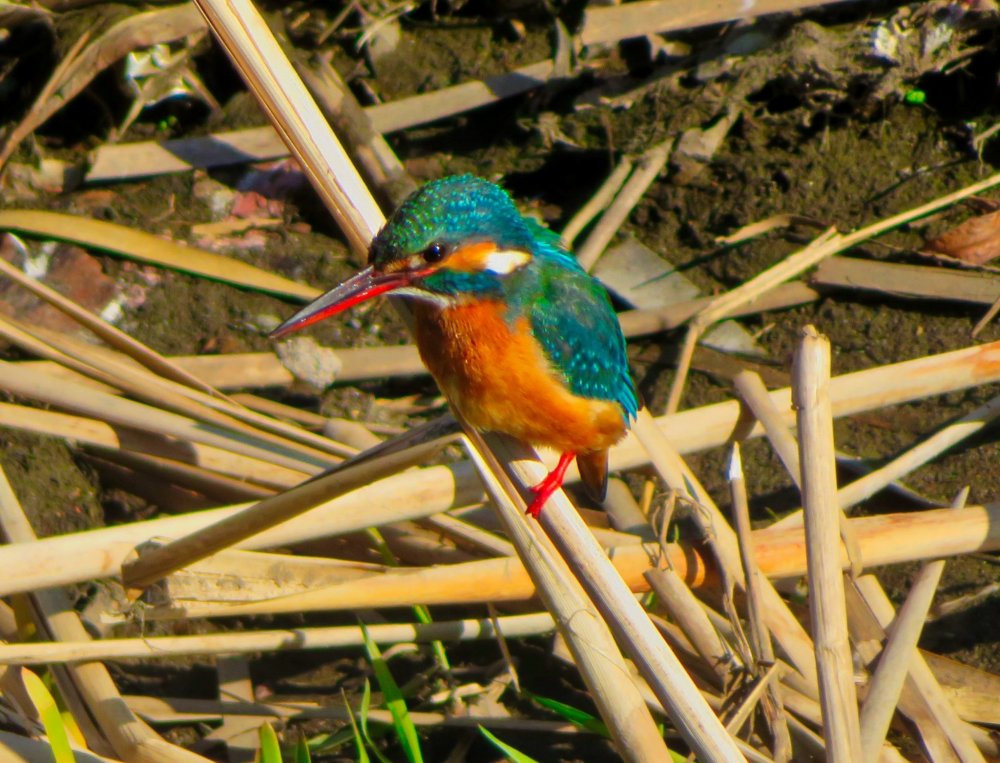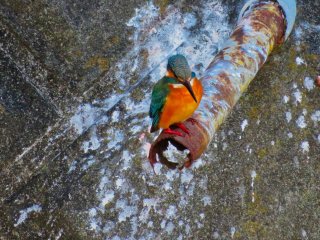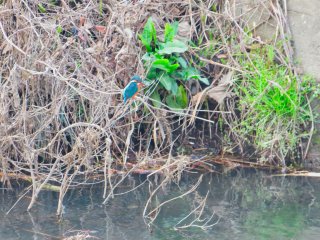There are 522 bird species in Japan with the Green Pheasant listed as the National Bird. For the avid bird watcher, you need not travel far from Tokyo metro to find some very interesting feathered friends. Many of the lakes. rivers, and ponds in the Yokohama area house a variety of sea ducks, bay ducks, gulls, herons, egrets, and my favorite: the Kingfisher.
The Kingfisher can be found throughout Japan. There are six species including the Common Kingfisher called Kawasemi, which I started spotting about six years ago. It is usually difficult to find this small 18cm bird as it is swift in flight and only hangs out where the water is clear and clean. During my walks along the canals I look for a flash of blue in the branches just above the water. After three frustrating years of trying to take a photo of this fleeting bird, I decided to learn a little about its habits. They feed on fish, fresh water shrimp, and aquatic insects. You can spot them along canals, lakes, and slow moving rivers, where their keen eyesight allows them to see through the reflections, spotting their meal just below the surface. Your best time to take pictures are in the early morning when they are actively feeding. They are solitary birds and live alone with the exception of the mating season.
The male Kingfisher uses a sharp whistle sound to attract the females starting in February. Once they mate both will participate in digging a hole along the riverbank. While the eggs are being hatched the male will bring fish to the female until the babies are ready to fly, then he heads back to his loner life. During the winter they go to warmer areas of Japan and apparently Yokohama is a preferred stop, where beginning in late fall you can spot the most Kingfishers. My favorite areas are: the ponds at Makigaharaikeshita Park also known as Oike Park near Futamatagawa, the canals from Higashi-Totsuka all the way to Ofuna, Maioka Park, as well as other countless ponds, lakes and waterways throughout the city.
An interesting fact about the Kingfisher; once in the water they close their eyes and use very delicate sensors to let them know when to quickly grab their prey. From my observance they almost never miss.
Because they are so swift and quiet, an avid bird watcher/Shinkansen engineer redesigned the nose of the bullet train, which resulted in a much quieter and energy efficient model.
If you want to capture a great photo of this beautiful bird, go to the Information Center at Yokohama Station and ask for a map showing the waterways and parks with ponds. It will be well worth the trip when you spot your first Kingfisher.
Getting there
Yokohama Information Center is inside the station near the central exit.









































































When I tell my friends I saw kawasemi in our local park, nobody asks if I got a photo. They’re so hard to shoot- tiny, fast flashes of blue.